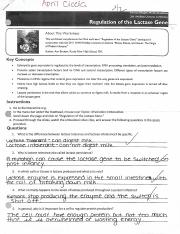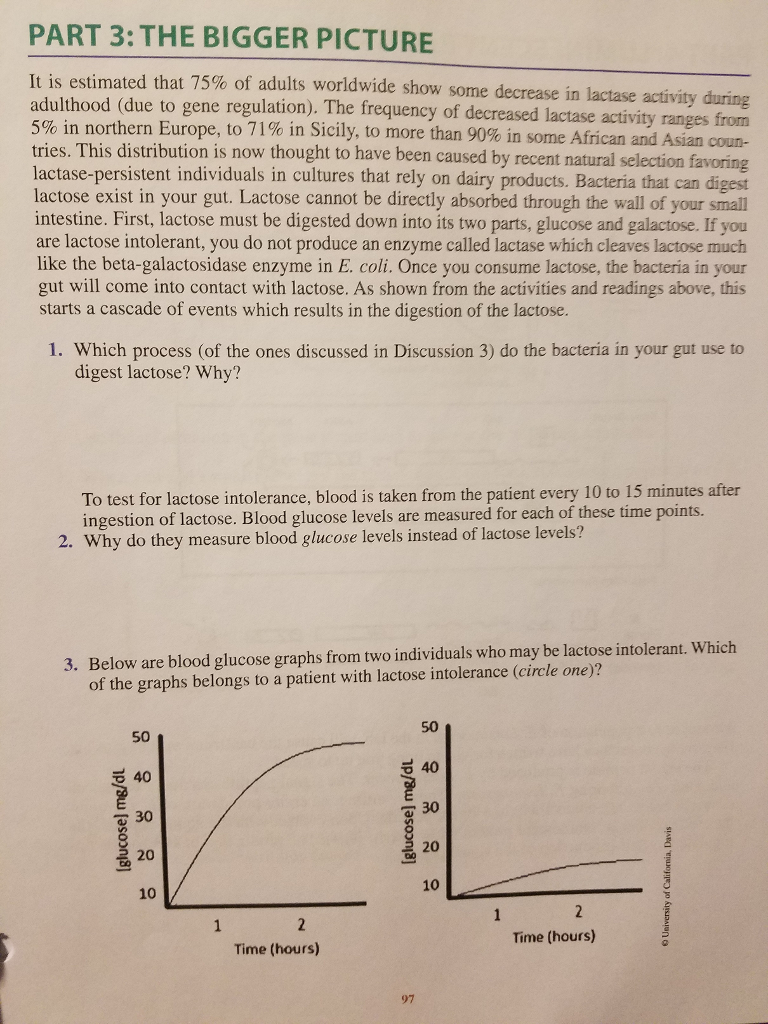Regulation Of Lactase Gene Answers
Interested in learning about the regulation of the lactase gene? You've come to the right place! In this post, we'll dive into the fascinating world of gene regulation and explore the various factors that control the expression of the lactase gene. So grab a cup of coffee and get ready to expand your knowledge!
The Basics of Gene Regulation
Before we start exploring the regulation of the lactase gene, let's first understand the basics of gene regulation. Genes are segments of DNA that act as instructions for building proteins. However, not all genes are active all the time. Gene regulation refers to the mechanisms that control when and how genes are turned on or off.

One of the main players in gene regulation are activators and repressors. Activators are proteins that bind to specific DNA sequences and enhance gene expression. On the other hand, repressors are proteins that inhibit gene expression by preventing the binding of activators or blocking the transcription process.
The Role of Activators and Repressors in Lactase Gene Regulation
In the case of the lactase gene, which is responsible for producing the enzyme lactase, activators and repressors play a crucial role in determining whether the gene is turned on or off. The lactase gene is particularly interesting because its expression is tightly regulated and varies among individuals.

Research has shown that the lactase gene is controlled by a combination of activators and repressors. For individuals who can digest lactose throughout their lives (referred to as lactase persistent), the lactase gene remains active, allowing the production of lactase even in adulthood. In contrast, individuals who develop lactose intolerance lose the ability to digest lactose due to decreased lactase gene expression.
Factors Affecting Lactase Gene Regulation
While the exact mechanisms behind lactase gene regulation are still being studied, several factors have been identified as key players in the process. These include:
- Genetic Variation: Variations in DNA sequences near the lactase gene can influence the binding of activators and repressors, thereby affecting gene expression.
- Epigenetic Modifications: Epigenetic changes, such as DNA methylation and histone modifications, can alter the accessibility of the lactase gene, impacting its expression.
- Hormonal Regulation: Hormones, such as growth hormone and glucocorticoids, have been shown to influence lactase gene expression. Different hormonal levels can lead to variations in lactase production.
Frequently Asked Questions
1. Why do some people lose the ability to digest lactose?
As mentioned earlier, lactose intolerance is caused by a decrease in lactase gene expression. This decrease can be influenced by various factors, including genetic variations, epigenetic modifications, and hormonal regulation.
2. Can lactase expression be modified?
While gene regulation is a complex process, researchers are exploring ways to modulate lactase expression. Some studies have investigated the potential use of pharmacological agents or dietary interventions to increase lactase production in individuals with lactose intolerance.
3. Are there any health risks associated with lactose intolerance?
Lactose intolerance itself is not considered a serious health condition. However, consuming lactose-containing foods or beverages can cause digestive symptoms like bloating, gas, and diarrhea in individuals with lactose intolerance. It is important for individuals with lactose intolerance to manage their dietary choices accordingly.
And there you have it! A brief overview of the regulation of the lactase gene. From activators and repressors to genetic variations and hormonal regulation, there's still much to discover about this fascinating topic. So, the next time you enjoy a glass of milk or a scoop of ice cream, remember the complex processes happening behind the scenes to allow you to digest lactose. Cheers!
Note: This post was created for educational purposes and does not constitute medical advice. Please consult a healthcare professional for personalized recommendations.
Regulation Of The Lactase Gene - HHMI
 Image Source : studylib.net
Image Source : studylib.net lactase regulation gene hhmi worksheet
Solved PART 3: THE BIGGER PICTURE It Is Estimated That 75% | Chegg.com
 Image Source : www.chegg.com
Image Source : www.chegg.com LactaseGene.docx - Regulation Of The Lactase Gene This Worksheet
 Image Source : www.coursehero.com
Image Source : www.coursehero.com lactase regulation worksheet
[Solved] Part III - Regulation Of Lactase Gene Expression In Eukaryotes
lactase regulation expression
20 Using Your Knowledge Of Activators And Repressors Hypothesize Two
 Image Source : www.coursehero.com
Image Source : www.coursehero.com Transcriptional Heterogeneity In The Lactase Gene Within Cell-type Is
 Image Source : www.nature.com
Image Source : www.nature.com gene lactase within cell type heterogeneity epigenome linked transcriptional modification genomic dna correlated axis differences regulatory distal proximal elements
Schematic Diagram Of Human Lactase Gene 5 Flanking Region. The Relative
 Image Source : www.researchgate.net
Image Source : www.researchgate.net lactase mcm6 flanking intron snp
9+ Regulation Of The Lactase Gene Answers Most View - Công Lý & Pháp Luật
 Image Source : globalizethis.org
Image Source : globalizethis.org 9+ regulation of the lactase gene answers most view. Solved part 3: the bigger picture it is estimated that 75%. Lactase regulation gene hhmi worksheet. Schematic diagram of human lactase gene 5 flanking region. the relative. Lactasegene.docx